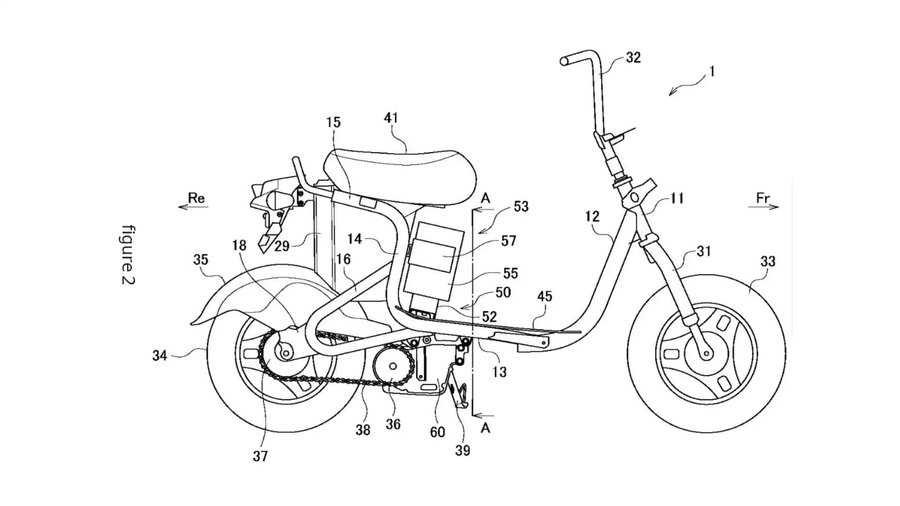Could This Suzuki Electric Scooter Patent Show Us The Future?

Back in October 2023, Suzuki showed off its first-ever hydrogen-powered test motorbike to the world. The occasion was the 2023 Japan Mobility Show, and the vehicle was a trusty Burgman 400 ABS outfitted with a hydrogen powertrain in place of the usual gasoline-powered version.
But that's not why you're here.
No, you're here for one of the other new two-wheeled creations that Suzuki showed off at the 2023 Japan Mobility Show.
Its name is e-Choinori, and it's essentially styled like an electric revival of an extremely cute, low-powered 50cc combustion scooter from Suzuki's past. At the show, visitors were able to get a look at the little guy up close and in person. And now, several months later, we have our first look at a patent to give a little more insight into how the e-Choinori might function.
The problem with a lot of battery-powered last-mile EVs, Suzuki believes, is that the batteries are housed in a less-than-user-friendly way. Either you have to lift the seat all the way up to get to them, or else they're heavy and awkward to carry. Neither of these things seem like particularly convincing features if you're trying to talk skeptical people into buying one.
That's something that the battery configuration and placement illustrated in this patent aims to correct. While the batteries are still under the seat, they're easy enough to slide out without having to even really touch the seat, let alone move it.
Also, there are two of them, mirroring each other's placement on either side of the under-seat area, just inside the tube frame. It may be simple, but it's also symmetrical and low-down, helping to keep the center of gravity low.
The electric motor, incidentally, is located down under the floorboard. In the patent itself, Suzuki describes the floorboard as serving to act like eaves to help rainwater run off and avoid hitting the motor in a rainy day riding situation, but I'm not sure if Suzuki has considered the effect that placement might have when the rider encounters a puddle.
In any case, the patent also describes several guiding pins that are positioned in each battery mounting area to help the rider easily position the batteries in their correct spots after charging. These aren't illustrated in the patent drawings, but they are described in detail in the text of the patent.
Since it's only a patent at this point, no weights for the individual battery units are given. So it's not clear at this point what kind of weight Suzuki is expecting potential buyers or renters of the e-Choinori to heft around; only that having two batteries should mean each is lighter than if they were a single unit with the same capacity as the two smaller ones combined.
It's meant to be a last-mile vehicle, which makes me envision rental fleets of e-Choinori that could be exposed to the elements. Making the batteries so easy to get to for riders makes it more convenient for them, but how will those semi-exposed batteries potentially stand up to the weather? Even if the cases are IP67-rated, will they also have good UV resistance to prevent potentially being compromised from sitting out too long in direct sunlight?
Perhaps I'm getting a little ahead of myself, since this is only at the patent stage right now. If and when Suzuki does bring the e-Choinori to market (and if it does, it's almost certain to stay primarily in Asia), there's plenty of time for it to further develop the little scoot to suit practical use in the real world.
Nouvelles connexes


